Welcome to the U-M Library’s digital magazine, which highlights stories from around the library, the library in the news, and upcoming events. A new edition is published at the start of each fall, winter, and spring/summer term.
Watch
Listen
Remember 5.25 inch floppy disks? No? This early digital storage medium became obsolete in the mid-1990s, but the disks that remain are more than just artifacts. Find out how Lance Stuchell, head of the library's digital preservation lab, coaxes information off of these and other obsolete digital media — once he figures out which side is up.
TranscriptSpeaker 1:
If an item doesn't appear in our records, it does not exist.
Speaker 2:
I've never seen so many books in all my life.
Speaker 3:
Get back to the library.
Speaker 4:
You're right. No human being would stack books like this.
Speaker 2:
What do you want to take out?
Speaker 3:
The librarian.
Speaker 1:
Shhh. Quiet please.
Joe Linstroth:
Welcome back to the University of Michigan Library podcast. I'm Joe Linstroth. The technology we use every day is constantly changing. For those of you who are a certain age, you might remember saving your work on a floppy disk that actually flopped.
Speaker 5:
Are you worried about a floppy disk losing all your payroll records?
Speaker 6:
No.
Speaker 7:
If you had 3M diskettes, you wouldn't have to worry. 3M floppys are certified 100% error free. No floppy is more reliable. 3M diskettes, one less thing to worry about.
Joe:
Now those diskettes touted in that 1985 commercial eventually gave way to the three and a half inch plastic ones that didn't flop anymore. Then came CDs. Then thumb drives and external hard drives. The list goes on. Over the last few years, the U of M Library has been getting more and more archival materials stored on these old devices as well as in formats and operating systems that have long been forgotten.
Lance Stuchell:
We were getting in this material that we didn't really know how to handle.
Joe:
That's Lance Stuchell. He heads up U of M Library's Digital Preservation Unit.
Lance:
So it was on obsolete media. It was on floppy disks, zip disks, kind of external hard drives, things like that. We didn't really have the capacity to take that material in, get it off the material while following best practice. So we had to establish this lab and get some specialized equipment so we could do that work. So if someone gives us a collection, it might be part paper, but it might have like a box of floppy disks. And so those floppy disks come here and then we get the material off those floppy disks and kind of moved into a better place.
Joe:
For this episode of the podcast, I went over to the U of M Library's Digital Preservation Lab to check out Lance in action.
Lance:
We're in the Buhr Building, which is not-
Joe:
Centrally located.
Lance:
Right. Thank you for rescuing me on something, a nice thing to say.
Joe:
Is there an example that comes to mind from a collection that you've worked on that really just sticks out?
Lance:
Yeah, so actually it was the first, I was testing the five and a quarter floppy drive. So five and a quarter floppy drives, you have to get vintage ones. They don't make those anymore. And you have to get a modern kind of a circuit board that will convert it to USB so you can use it with a modern computer. So it was very new to us.
We had just gotten the actual drives in. We purchased them from eBay and John Sayles' collection has a lot of five and a quarter floppy disks. So I just randomly kind of picked a disk up and put it in the floppy disk. And after about an hour when I realized I was putting the disk in upside down, then I was like, Oh, that would probably work better. So I flipped it around and it worked. It showed all the files. And I randomly picked on a file and it was actually, it looked like it was a cover letter that was sent to Charlie Sheen that contained kind of research materials for the character he would be playing in Eight Men Out.
Joe:
That's a late eighties movie about the Black Sox-
Lance:
Yep.
Joe:
The Chicago white Sox that threw the World Series.
Lance:
Yeah. Right. So that was cool, instead of being like a random like financial information spreadsheet or something.
Speaker 8:
We're going to see the Sox.
Speaker 9:
Baseball. 1919. There were no free agents, no million dollar salaries, but there was a team no one could beat. The true story of the team they called the Black Sox and the scandal that broke the heart of a nation.
Lance:
So that was kind of cool. I will say it's also really cool when we get faculty members or graduate students that come in and have work that they can't access anymore cause it's on a floppy disk or something. We just a couple of weeks ago had a researcher whose specialization is calls of crickets. So it was all these recordings of cricket calls and so they were actually on zip disks, so we were able to set up our zip disk set up and recover everything and kind of give them back to him on a regular like USB drive. He was very appreciative that we were around and kind of the word is getting out that we can provide this type of thing to campus, which is something we really enjoy doing. Just helping people out with that kind of thing.
Joe:
Interesting. All right, so let's get a taste of how you do this.
Lance:
Sure.
Joe:
You have something here from the U of M Library Collection that you haven't worked on yet. What do you have and what collection is it from?
Lance:
Yep, so it's from the Stephanie Mills Collection and this particular disk was identified by the archivist as being particularly interesting. So one of the things she's known for is a 2002 book, Epicurean Simplicity. And this disk actually has some chapters from that book written in draft form.
Joe:
And real quick just for listeners at home, it is a floppy disk and in someone's handwriting it reads: Epicurean Simplicity, overpopulation, fetal personhood, moral and ethical, with an ellipsis, all saved in two formats. WordPerfect 6,7,8. ANSI Windows Generic. WP.
Lance:
Yes. You don't usually get labels that good. That's a great label. Particularly because it's calling out what format the material is in.
Joe:
I mean, is that helpful to you?
Lance:
Oh, it's super helpful. It's super helpful because I can tell — so that ANSI Windows generic, that's basically a text file, so it's going to be really simple and it's probably just going to be readable right off the disk.
Joe:
ANSI, I just read all the letters.
Lance: Yeah, no, that's okay.
Joe:
You can tell what an inexperienced techie I am.
Lance: Right. And then WordPerfect, right? Everyone was using WordPerfect in the late nineties, early two thousands.
Joe:
For sure.
Lance:
Yeah and now no one uses it anymore. So because that's a proprietary file format that's not around anymore, it's obsolete, that's going to be more challenging. But since we know that this was actually saved in two formats, the likelihood that we're going to get something off of this is pretty high.
Joe:
All right, let it rip. Let's slip it in here.
Lance:
Okay. So nothing happens at first because the computer is not recognizing the old file system. So we use something called FTK Imager. FTK is a forensic toolkit. And you'll notice as kind of I'm walking through this, it uses very forensic terms. So kind of law enforcement. This is a tool that law enforcement uses. There's a kind of odd parallel between what an archivist wants out of digital content like this and what a forensic investigator might be looking for. [Whirring sounds in background.] And what I'm doing now is drilling into the file structure. So it's taking a while to actually read off this disk to get into the actual files.
So it identifies all of these files in the directory. So that's good. It's identifying some of them as .wpd, which is WordPerfect. And it's also, which makes any digital preservation librarian happy, is that there's also some .txt files. So those are really simple. Those are the ASCII — or rather, the ANSI texts. So we're still looking at the disks. So this looks like —
Joe:
Some words just popped up.
Lance: Yeah-
Joe: Chapter one Epicurean Simplicity.
Lance:
Yeah, so someone interested in seeing her writing process or seeing an early draft of the book. I think they would have just gotten an early draft of chapter one from her book.
Joe:
Okay. So it looks like we have something here.
Lance:
Yep.
Joe:
We've found, you know, at least what might be a draft, an early draft of her book, Stephanie Mills' book Epicurean Simplicity. Okay, so once you've got the material unlocked, what happens next?
Lance:
Yeah, so we have a great kind of partnership with archivists in special collections, so special collections is part of the library. So like in this case, the archivist that identified this disk is an interesting one. I can kind of do what I just explained I do and then we would turn that over to the archivist, at least telling them — so we create a lot of metadata and things like that as we do this. And if they were interested in a specific disk, like this disk, I would email the archivist and say, Oh, we have stuff. But it would definitely be kind of the archivist would now, they're the subject expert, so they would be the one that'd be like, Oh, we just struck gold, or like, Oh no one will care about this particular thing.
Joe:
So to find out whether we had struck gold, I headed on over to the Special Collections Research Center on the sixth floor of the Hatcher Graduate Library to ask the curator. [Elevator dings.]
Julia Herrada:
My name is Julie Herrada. I'm the curator of the Joseph A. Labadie Collection in the Special Collections Research Center at the University of Michigan Library. My connection with the Stephanie Mills collection is that I acquired the collection for inclusion into the Labadie Collection in about 2006.
Joe:
So, Lance Stuchell, over at the library's Digital Preservation Unit, pulled some information off of a floppy disk that was among Stephanie Mills collection. What did he find?
Julia:
Well what was on that floppy disk was a draft of one of her books, and it was typed onto probably an old word processing program in probably the eighties or nineties, and then it was left there and never pulled off of that again until very recently.
Joe:
So when you looked at it, when Lance sent you the email with the connections, how useful was having this particular information that Lance showed me how to take off this disk?
Julia:
Well, it is an early draft of one of her books and it does show, maybe, if you were to compare that with other drafts of her book, you would see the various changes that were made in the writing process. I'm not sure how important that is in this context, but we didn't know what that included until we actually went and pulled it off of that floppy disk. And that goes with any AV, any analog format. We don't always know what's on there until we go through that process. And it might be not very important, but it might be great.
Joe:
How important is the Digital Preservation Unit to the work that you do in managing the Labadie Collection?
Julie:
Oh, it's very important. I mean, we wouldn't, a lot of material would be lost without them. We wouldn't know what was on there. We would never be able to access it. And it degrades over time, too. So it's important and imperative that we capture this information as soon as possible.
Joe:
That was Julie Herrada, the curator of U of M Library’s Labadie Collection. Okay. So our digital detective work failed to discover anything Earth shattering this time around, but, more and more material is coming into the U of M Library and all sorts of digital forms. I think it's safe to say that in the years to come, the trend will only get bigger. That means, the technology we're using now will sooner or later become obsolete. And so will the technology we'll be using after that, and after that. So back at the Digital Preservation Lab, I had one last question for Lance. How are you preparing now for what you'll need to do your job ten, 20, 30 years from now?
Lance:
Yeah, that's a great question. So I think there's a couple of things we're doing. One of the things is we're making sure that the digital content we create as the library is preservable. So what I mean by that is it's in a good format and we don't really worry about the container. We don't really worry about what media it's on because we know that media is going to be obsolete and we know that file format will likely be obsolete. So we just want to understand what's the important content in this file, and how do we migrate that forward, and we have a plan. The terrifying thing, it's terrifying but it's also job security, are things like this, like archival collections where people are creating digital content at their homes, right? And they might not know everything there is to know about creating digital content cause they're not digital archivists or librarians or digital preservation librarians.
And so what we try to do is we try to share our knowledge to the folks that are interested. So we do activities on campus that reach out to the campus community. We've done some public events, like a public library and things just to kind of push out how to create good digital content, because this will always be a thing. Obsolescence will always be a thing, right? There's-
Joe:
It seems even faster and faster.
Lance:
Yeah. Well all of the equipment and all the software we use, right, it's being made by people who have a commercial interest in us buying it again. Right? So it's always going to kind of be like that. But acknowledging that, we just kind of to try to apply some of our digital preservation principles: create good content to begin with, and then manage the content rather than the physical media. We try to push that out so people know about it.
But not everyone has time to do that [content management]. And a lot of people are still going to be creating digital content, on an external hard drive probably nowadays, and the archive won't get it for 15 years later, and we're probably using different technology then. So part of our mission will be collecting older equipment as it goes obsolete, so we have it if we need it. But really, ideally, we're kind of pushing out that knowledge so people know just what it means to create good digital content, in case it ends up here, but also for themselves so the next generation can have their digital photos and things like that.
Joe:
You touched on it briefly, sounds like job security.
Lance:
Yeah, it's totally job security. Yeah, it's nice. It's horrifying sometimes, like when you open up a box and realize there's moldy floppies in there, but yeah. Yeah, it's job security.
Joe:
And that's a wrap for this edition of the University of Michigan Library podcast. A special thanks to librarians Lance Stuchell and Julie Herrada. For more stories about what's happening at the library check out the latest edition of our digital magazine, which is out now at magazine.lib.umich.edu. I'm Joe Linstroth until next time.
Photo courtesy U-M School of Information
Around the library
A centuries-old composition, brought to life
University of Michigan faculty members and students have breathed new life into a rare musical composition that has not been performed for at least two centuries.
Faculty and students at the School of Music, Theatre & Dance did painstaking work to create a performance edition of “Quando o bella Clori,” written by Italian composer and keyboard virtuoso Giuseppe Domenico Scarlatti (1685–1757). They debuted the piece at an event in the Hatcher Graduate Library in October.
The performance edition is based on a 1712 piece by Scarlatti. The handwritten composition has been part of the U-M Library’s music collection since the 1950s. It is the only known copy of this work, and was originally part of the private collection of Jean Auguste Stellfeld, a prominent Belgian jurist and musicologist.
More/LessAccording to Music Librarian Jason Imbesi, the acquisition of the Stellfeld Collection marked the Music Library’s shift from curricular support to true research music library. This rare piece by Scarlatti is an example of the kinds of opportunities such a research collection offers.
Louise Stein, professor of musicology, said Scarlatti wrote the piece while he was working in Rome for the widowed, exiled queen of Poland, Marie Casimire Louise de La Grange d'Arquien. As a serenata, the work is created for two solo singers, two violins and basso continuo.
Stein says, “It seems to be the only surviving serenata from Scarlatti’s time in Rome,” and given that the last pages of the manuscript have been ripped out, ”it is especially unfortunate that it is incomplete.”
Stein thinks the piece was likely performed at the Palazzo Zuccari in Rome, where the queen had established a lavish court and held musical evenings.
The music professors and students believe the piece has not been performed for at least 200 years.
“It’s great to have something new that you didn’t know that this person wrote,” said Joseph Gascho, an assistant professor of music and keyboardist who advised the students as they prepared to perform the Scarlatti piece. “So we’ve learned a little bit more about him as a musician, composer, and person. It’s just a little extra knowledge and insight into what he was like.”
To create a performance-ready edition of the manuscript, flute performance masters student Ellen Sauer entered the notes into music writing software and closely analyzed the work to decipher inconsistencies in the text.
Sauer likens her efforts to that of an archaeologist, adding that her team was forced to improvise due to the age of the piece. Since there are no recordings, the musicians determined the appropriate tempo. And because the lyrics in the 1712 manuscript are haphazardly written under the notes, Sauer said they had to workshop how the old Italian would have been set with the notes.
“In that way, it feels really new,” she said; they were recreating what might have been. And this process, a collaboration that bridged four centuries and required close analysis of the original — many hours spent “seeing his handwriting and feeling the old paper” — left Sauer with a deep and abiding connection to the work and its composer.
By Safiya Merchant and Lynne Raughley
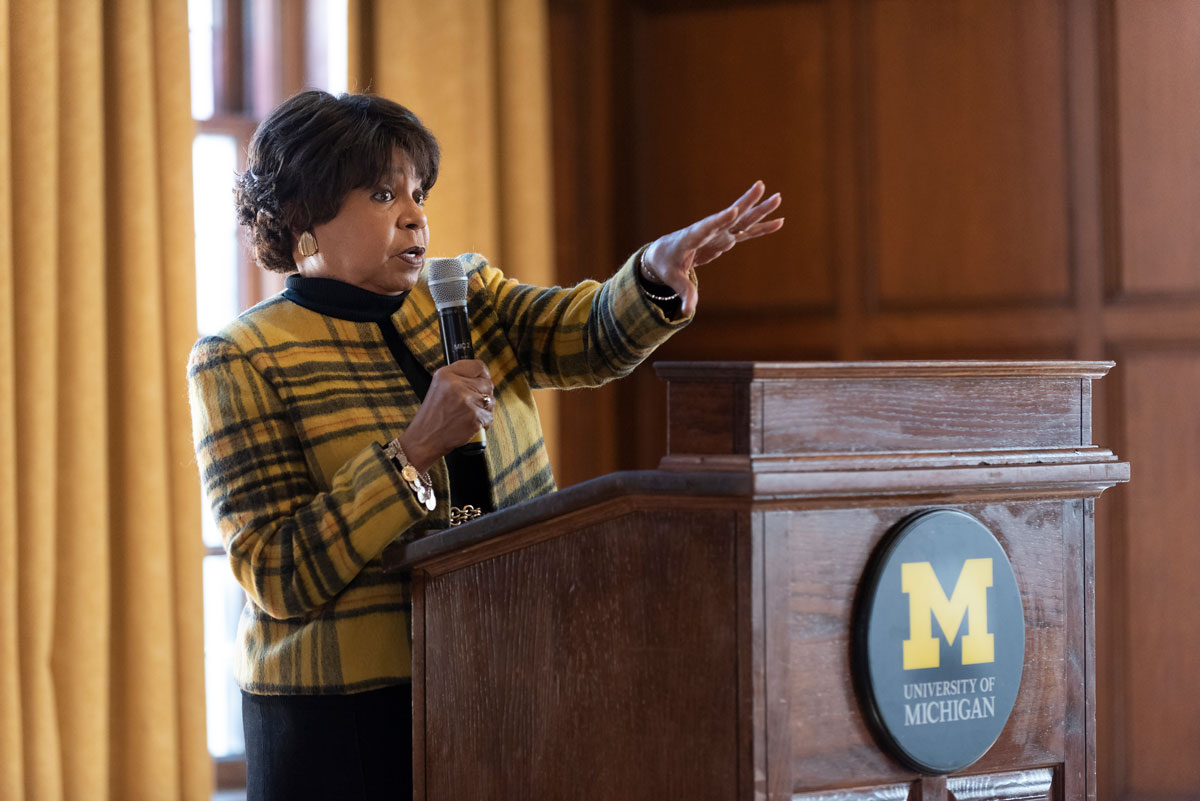
Inside Brown v. Board of Education
Cheryl Brown Henderson spoke about her experience with segregated schools, and told the story of her family's role in the landmark Supreme Court case, Brown v. Board of Education.
Henderson's father, the late Reverend Oliver L. Brown, along with 12 other parents in Topeka, Kansas, filed suit on behalf of their children in 1950. The case eventually made its way to the U.S. Supreme Court, which in May of 1954 ruled unanimously that racial segregation in public schools violated the Fourteenth Amendment to the Constitution, and declared that separate educational facilities for white and African American students are inherently unequal.
Brown's talk was part of the university's annual U-M Reverend Dr. Martin Luther King Jr. Symposium. (Photos by Bill Bresler)
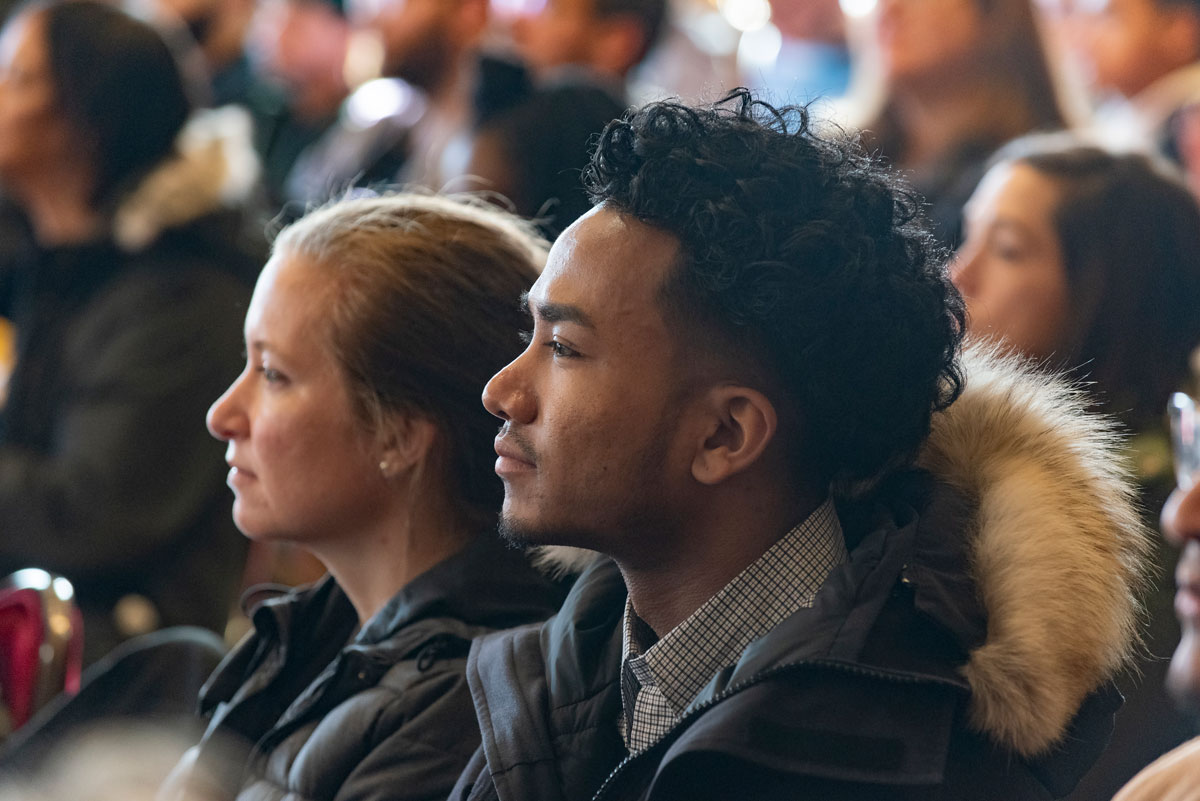

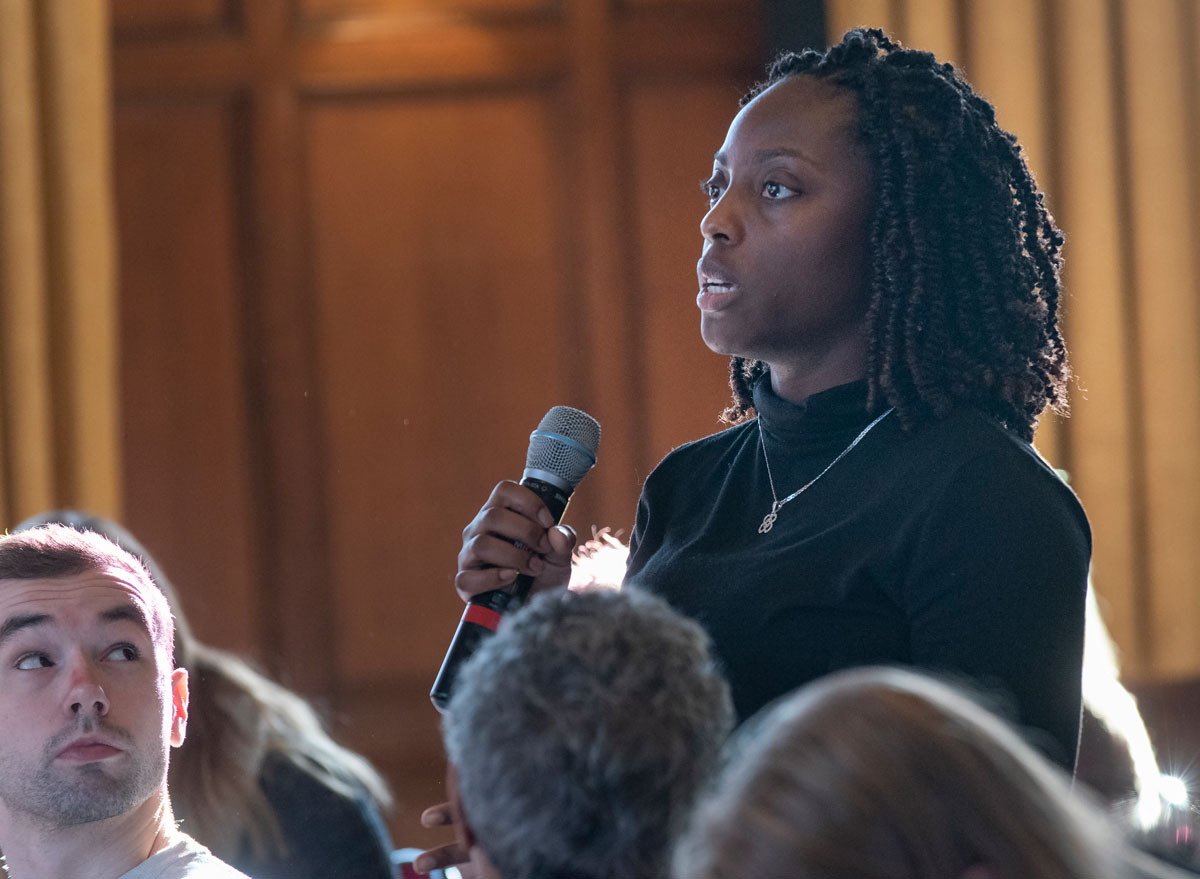
The Master and Margarita and the library
The Mikhail Bulgakov Literary-Memorial Museum in Kyiv resides in the childhood home of this iconic 20th-century Russian writer, most famous for his posthumously published novel The Master and Margarita (1966), a fantastical satire of life in the Soviet Union.
The museum holds a collection of Bulgakov’s personal belongings, including letters, books, photos, and heirlooms, toward “preserving the spirit of that time and recreating the atmosphere, in which Mikhail Bulgakov wrote his best books.”
Now, thanks to the enterprising work of a graduate student and an international collaboration, nearly 700 of these items are viewable online via the library’s Mikhail Bulgakov Digital Collection. The Mikhail Bulgakov Literary-Memorial Museum in Kyiv is the first in Ukraine to digitize and publish its collection online for an international audience.
Grace Mahoney, PhD candidate in U-M's Slavic Languages & Literatures department, digitized the objects while working at the museum toward a graduate certificate in the U-M Museum Studies Program. But long before this project, Mahoney had been nurturing a connection to Ukraine.
More/LessIn 2014-2015, she spent a year in Kyiv on a Fulbright Research Fellowship, researching street art and political activism, particularly around the 2014 Maidan Revolution. She has also held summer internships at the Maidan Museum in Kyiv and the Ukrainian American Archives & Museum in Hamtramck.
So when seeking a practicum for the Museum Studies Program, she reached out to the people at the Bulgakov Museum, a place she knew well from her previous visits to Ukraine. “It was one of my favorite museums, and I thought it might be a good fit. They asked me to help digitize their collection and find an international platform, preferably American, to publish and host it online,” Mahoney says.
But there were challenges. Few institutions, she discovered, offer any path via which she could even request this kind of hosting arrangement. “The University of Michigan Library was the first I found that offered to work with outside collection holders and institutions. For me it was a great fit; I could work with my home institution on a mutually beneficial project to realize the Bulgakov Digital Collection.”
Mahoney was involved in every aspect of the project, which meant reckoning with a range of issues. “At first, the technical aspects and the details around the copyright issues totally overwhelmed me,” she says. As project lead, it was important that she develop an understanding of these issues; but, thanks to the expertise and support of the library’s digital content & collections team and the copyright office — which were, she says, “exceptionally patient and generous” — in the end she was able to focus on the museum side: translating, applying the proper metadata, and navigating the cultural and institutional differences between the Ukraine and the U.S., and the museum and the library. And of course, scanning each of the hundreds of items with her own hands.
“It was so cool to hold the letters, photos, and objects that one of my favorite authors touched or created. I learned so much about the materials people wrote on, Soviet postcard design, how people signed letters and gifted photos. I could trace Bulgakov’s evolution from timidly signing the bottom or back of a photograph to scrawling all over it in big, loopy handwriting.”
And by creating this collection, which is openly available to everyone, Mahoney and the library have made it possible for people around the world to make similar discoveries for themselves.
By Lynne Raughley
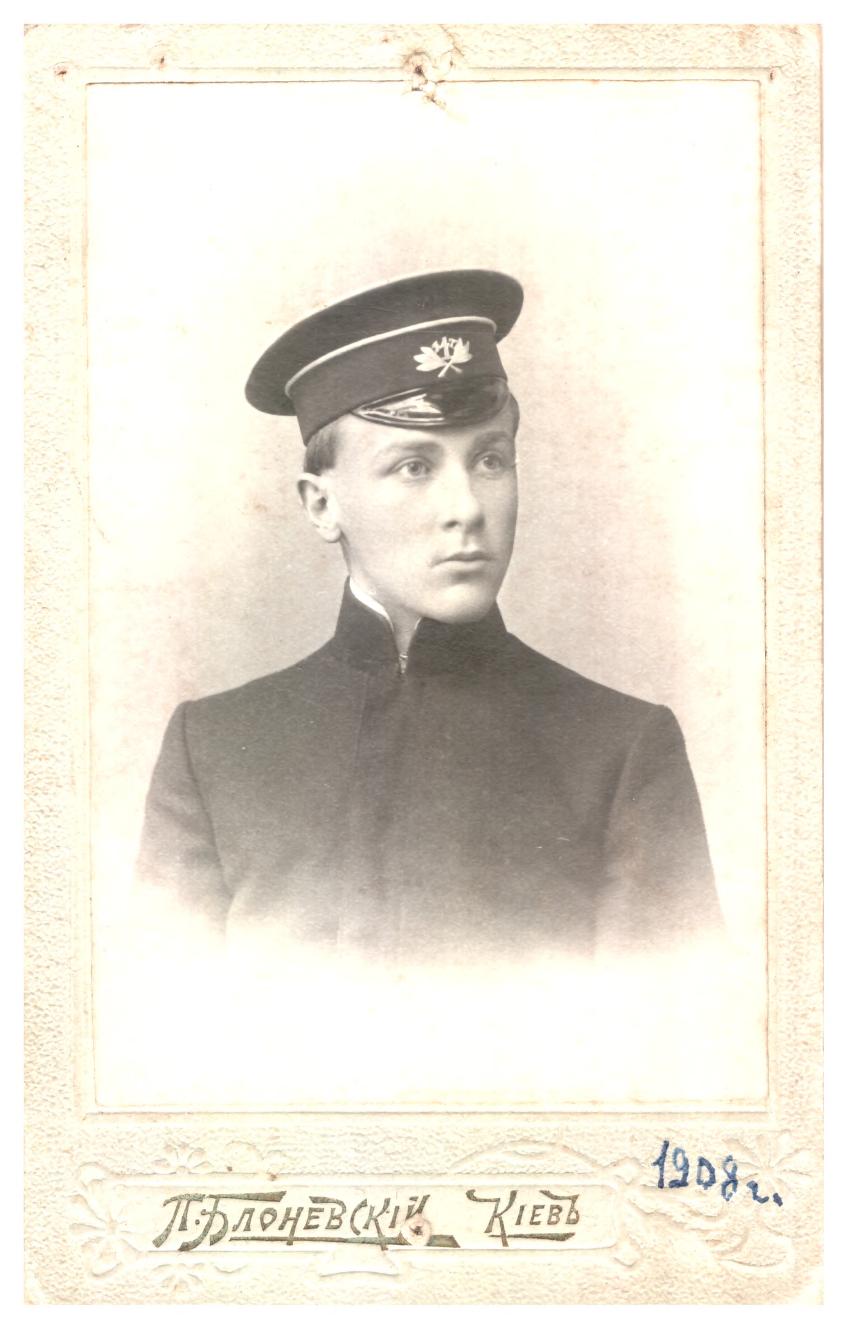
courtesy the Mikhail Bulgakov Literary-Memorial Museum
Starting out strong
Olivia Chang won the 2019 Undergraduate Research Award for Outstanding First-Year Research Project for her research paper on relations among self-esteem, contingencies of self-worth, and disordered eating in college-age women, which is being developed for submission to a peer-reviewed journal. Here she shares her library research experience with Danielle Colburn, the library’s marketing assistant. (The interview was edited for length and clarity.)
Which library resources did you rely on for your research project?
At the beginning of the semester I met with Hailey Mooney, a librarian specializing in psychology and sociology. She taught me Boolean query language, and how to access PubMed, Google Scholar, and ProQuest, and equipped me with several search engine tips. With the library’s immense access to psychological research I was able to conduct a literature review on the relationships among self-esteem, contingencies of self-worth, and disordered eating in college-age women.
It became evident that no researcher had assessed how all seven contingencies of self-worth might be related to disordered eating in females. My research mentors and I thought that this exclusion exposed methodological flaws and potential gender bias — researchers assuming that the primary reason for eating disorders among women is that they base their self-esteem on their appearance. We had reason to believe that other contingencies of self worth, such as virtue, might represent important variables in understanding the association between low self esteem and disordered eating in college women.
As a first year student at the time of your project, how did you navigate the library and make it work for you?
I reached out to librarians, my research mentor, and graduate students, all of whom were so willing and kind to share their (much greater) research knowledge with me. I’d say that I made the library and this research project work for me simply by staying curious and open to asking questions and listening to what others had to say so I could build off of their knowledge and experience.
More/Less What was the most challenging part? What was the most rewarding part? What did you learn about research and the library?
The most challenging part of this project was to finish it. I’d been immersed in a mass of research, and it sometimes felt like I needed to do more, expand my theory, contemplate different implications, etc. I guess I felt a sense of duty to do a really thorough and polished job; and while the truth is you can always try to make it better, I’m quite satisfied with how it turned out as a whole.
The most rewarding part is the chance to help, to teach, to expand knowledge on self esteem, contingencies of self worth, and disordered eating. Research is built off of the knowledge shared by other researchers, and just to be a part of that process — sharing new information, and seeing how it can spark future studies or new approaches to treatments and interventions — is something that makes me feel like I’m contributing to the world in a meaningful way.
I learned that research is a lot like teaching. Researchers learn something new and share it with the scientific community, which responds with further research and new findings for more researchers, clinicians, and therapists to learn from. It’s truly an outward spiral that can have a positive and significant effect on the lives of everyone. I also learned how valuable the library is.
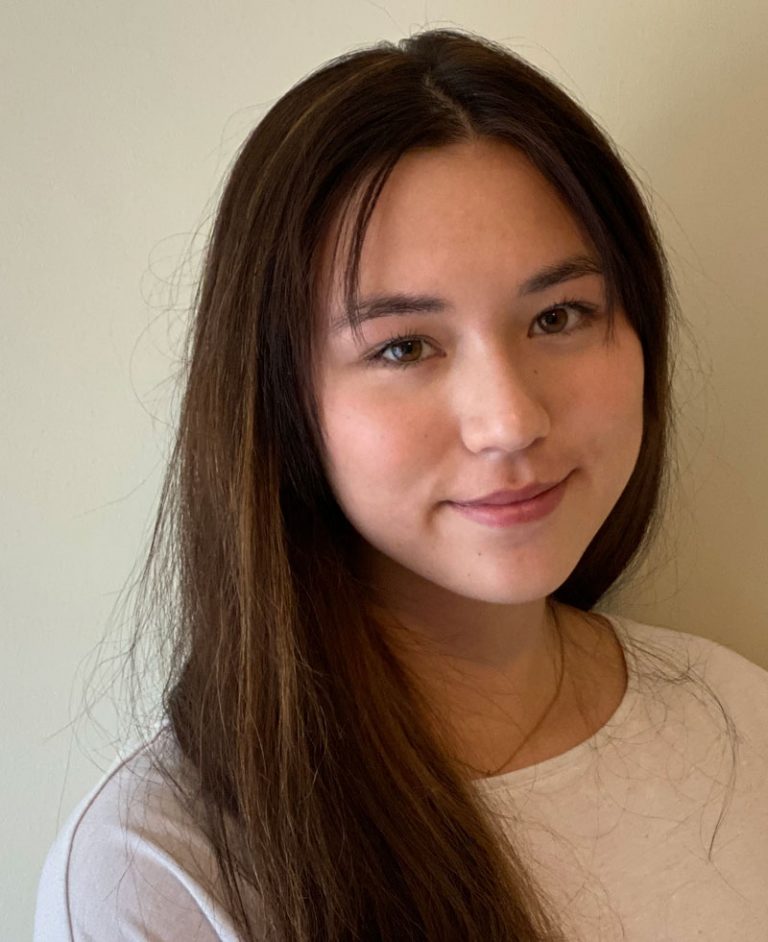
Photo by Stephanie Chang
Read more about Pam MacKintosh and her commitment to supporting and recognizing the success of Michigan's undergraduate researchers.
Beyond the library
CVGA in the news
A November article in American Libraries featured the library's Computer & Video Game Archive. The article addresses the goals and the challenges of collecting, preserving, and maintaining the playability of video games over a wide range of formats and platforms.
Film librarian weighs in on "Michigan's greatest movies"
Film Studies Librarian Phil Hallman provided expert commentary on the results of a Detroit Free Press survey that asked readers to vote for their favorite movies set in Michigan.
LSA Today highlights Zooniverse project
An article in LSA today highlights a Biological Station project that's using Zooniverse, a web interface supported by the Shapiro Design Lab, to unearth, share, and preserve data from more than a century of findings from student reports about their summer projects and experiments.
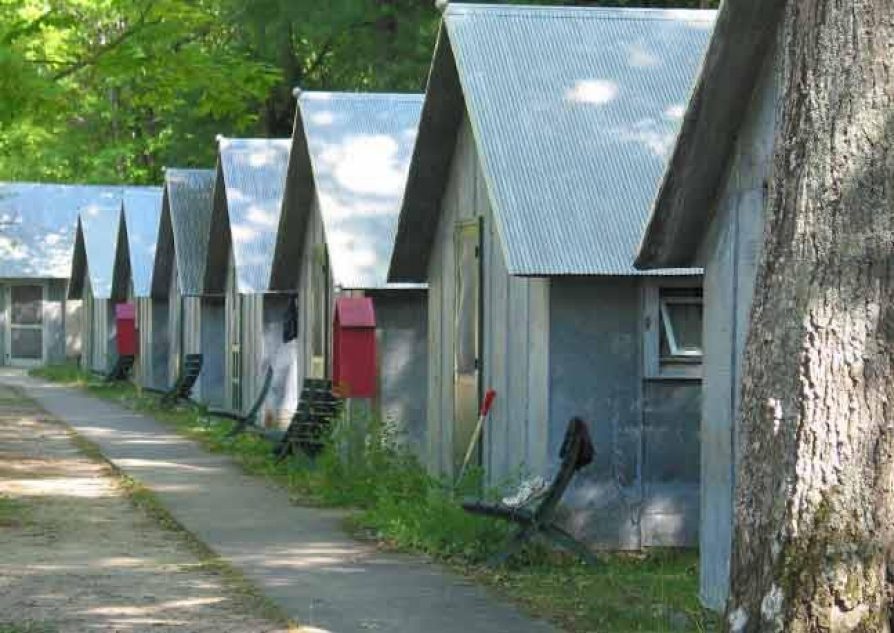
Photo courtesy LSA
Photo op
With the Michigan Union closed for repairs, the class of 2019 couldn't access a favorite campus cap-and-gown photo op, so the library stepped in. We dressed up the front of Hatcher and welcomed all comers — friends, families, pets — with or without mortar board and tassel.
We'll be there again for the class of 2020, and for their families, friends, and supporters, on April 30 and May 1 from 1–7 p.m.
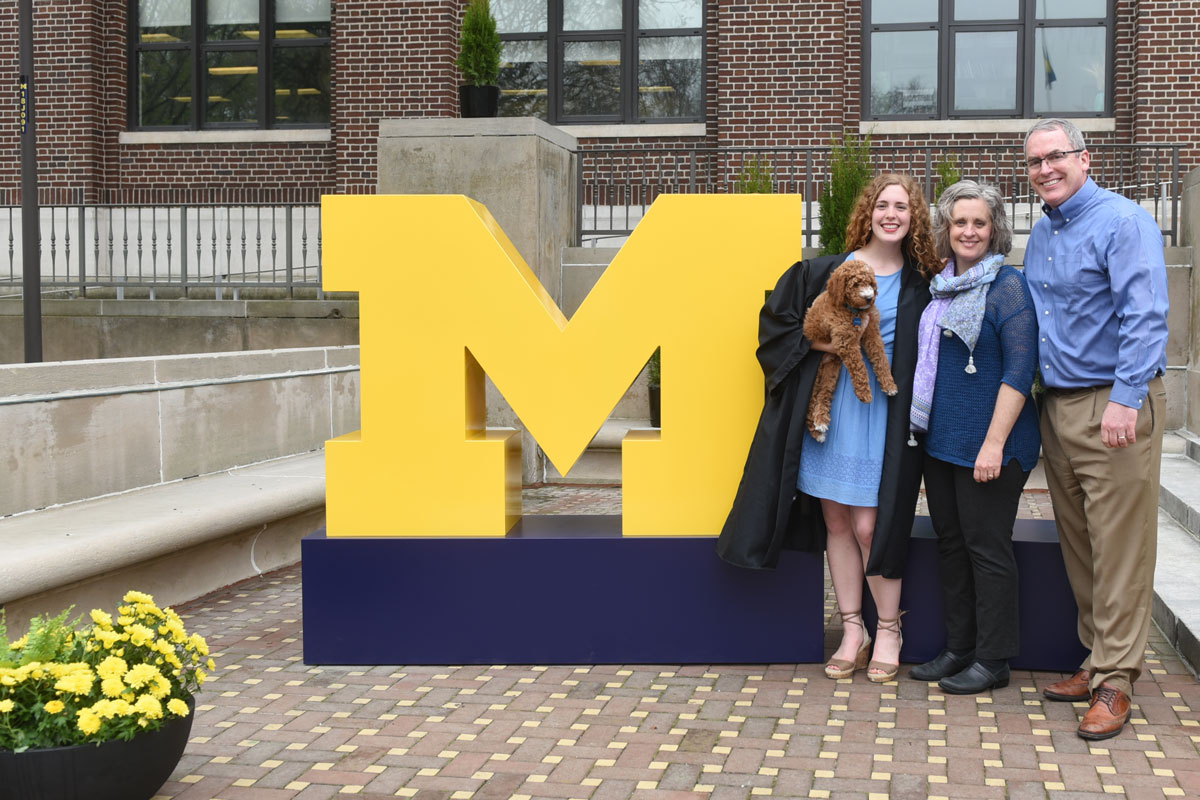
Photo by Melissa Squires
Featured blog post
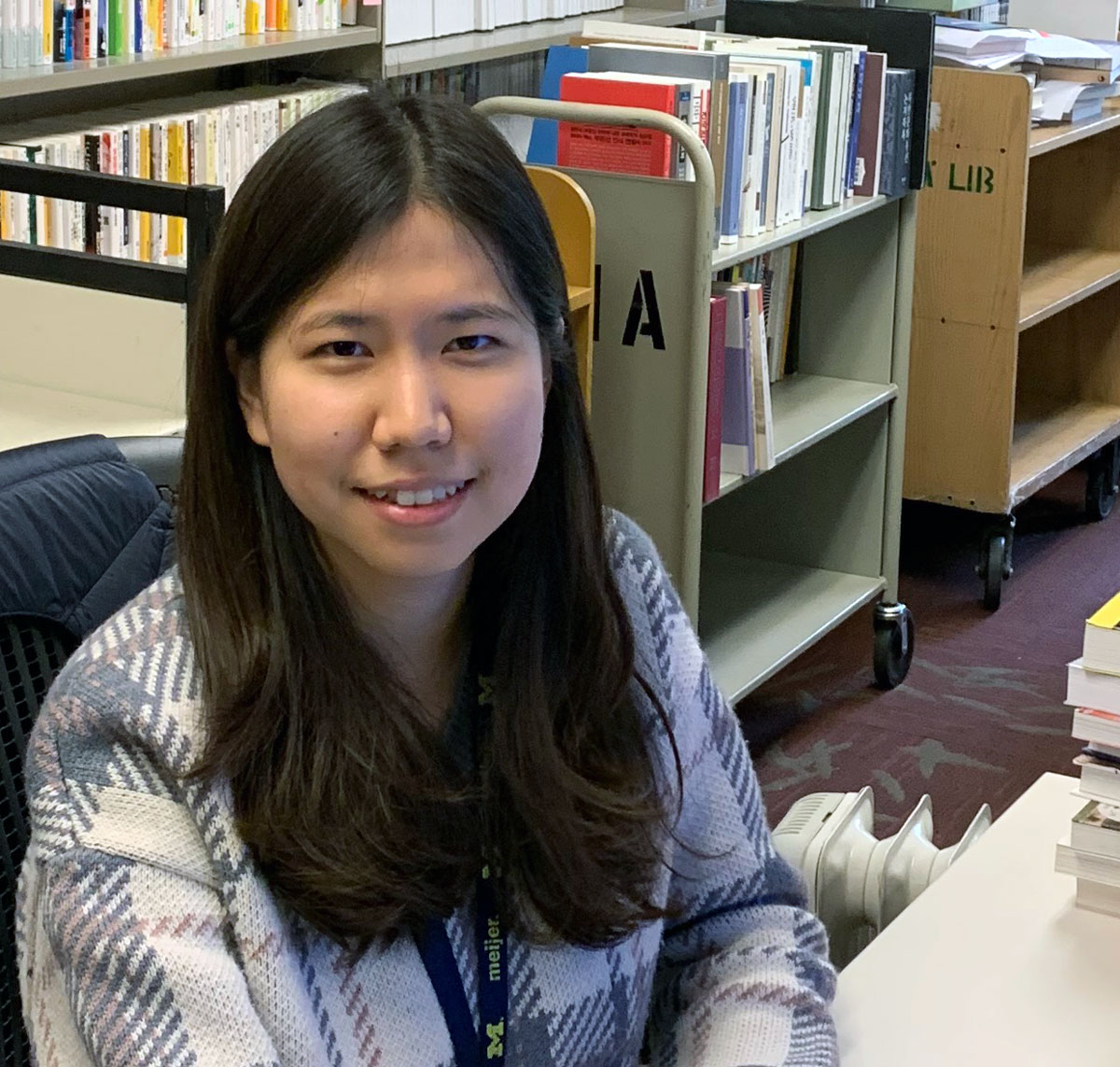
Photo by Dawn Lawson
Head of Asia Library Dawn Lawson interviewed Yujin Choi, an intern who spent a year working at the library via a program sponsored by the Korea Foundation. The foundation aims to provide Korean students specializing in library science the opportunity to work at prestigious libraries in the U.S. and Europe.
Choi, who returned to Korea in December, gained real-world experience in a work environment that she called "truly international." Korea Foundation intern Seohyun Kim arrives in February.
Featured online exhibit
The Career of Rama: An Epic Journey Through South and Southeast Asia is an examination of the Ramayana, a sanskrit epic of ancient India that remains a literary force throughout South and Southeast Asia.
The exhibit, created by undergraduate Estrella Salgado during a 2019 Michigan Library Scholars summer internship, focuses on the epic's plot and characters, and delves into a few of its many regional adaptations.

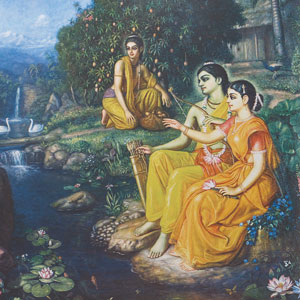
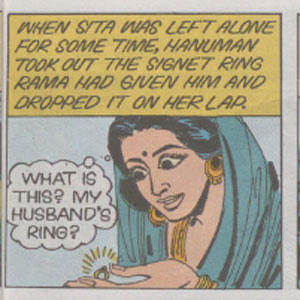
Current & upcoming
Check our Upcoming Library Events on a regular basis and sign up to receive our weekly exhibits & events email. Highlights include ongoing monthly events: Third Thursday Open House in the Clark Library, and Special Collections After Hours in the Special Collections Research Center.
And please join us for some or all of the library's special events and exhibits in conjunction with LSA's Great Lakes Theme Semester:
- In the North Lobby of the Hatcher Library, you’ll find Creating the Great Lakes: Selections from the U-M Library. This exhibit highlights how living in the Great Lakes has inspired a wide range of scholars, writers, and artists.
- On display in the Clark Library on the second floor of Hatcher is Waterways to Motorways: Traversing the Great Lakes. This visual tribute celebrates the role the lakes played in the history and development of the region, and delves into the history of exploration and cartography in the Great Lakes.
- On February 11, visit the Special Collections Research Center between 4 and 6 pm for Cooking Around the Great Lakes, a Special Collections After Hours event to see a selection of 20th century charity and heritage cookbooks from the states surrounding the Great Lakes.
- Great Lakes area writers and Michigan Quarterly Review contributors will read for From the Great Lakes to the Global Water Crisis: Writers on Water. Join us on February 25 for an evening of poetry and prose, which will celebrate MQR's Summer 2011 issue "The Great Lakes: Love Song and Lament," and introduce the Spring 2020 issue "Not One Without: A Special Issue on Water.”
- On March 10, Special Collections After Hours will present The Great Lakes in Children's Literature. Look at the Great Lakes region through the perspective of children's literature, with a particular focus on Michigan authors such as Tom Pohrt, Nancy Willard, and Joan Blos. In addition to published works, selected archival materials and artwork will be on display. This open house follows a lecture by Dr. Elizabeth Goodenough entitled "Growing Up Near the Great Lakes," at 3 pm in the Special Collections Research Center.
Of course, we also have many books about the Great Lakes that offer a variety of perspectives on the region's history, people, industries, and environment.
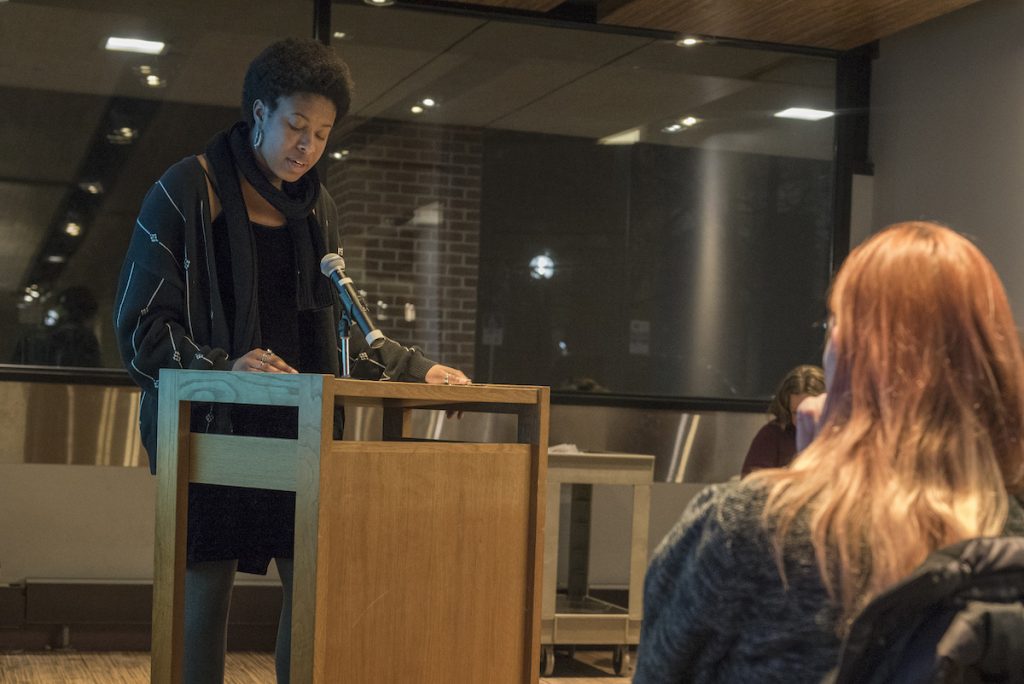
Photo by Bill Bresler
Café Shapiro
Student writers, nominated by their instructors, read their poems and short stories. For many students, Café Shapiro is a first opportunity to read publicly from their creative work. Join us for a reading, or come to all five. Five evenings in February in Bert's Lounge, Shapiro Lobby.
Dear Stranger
See Dear Stranger: Diaries for the Private and Public Self in the Audubon Room, Hatcher Gallery | Through April 12
Explore more than two centuries of diaries and diary-like documents from across the holdings of the Special Collections Research Center, ranging from privately emotive to publicly informative. These ephemeral writings embody elements of both private and public writing, and document lives and events that are often absent from the historical record.
Waterways to Motorways
See Waterways to Motorways: Traversing the Great Lakes in the Clark Library, 2nd floor Hatcher | Through March 9
This visual tribute delves into the exploration and cartography of the Great Lakes, and examines the modern role of tourism and motorized travel through pictorial and road maps. This exhibit is part of the LSA Great Lakes Theme Semester.

